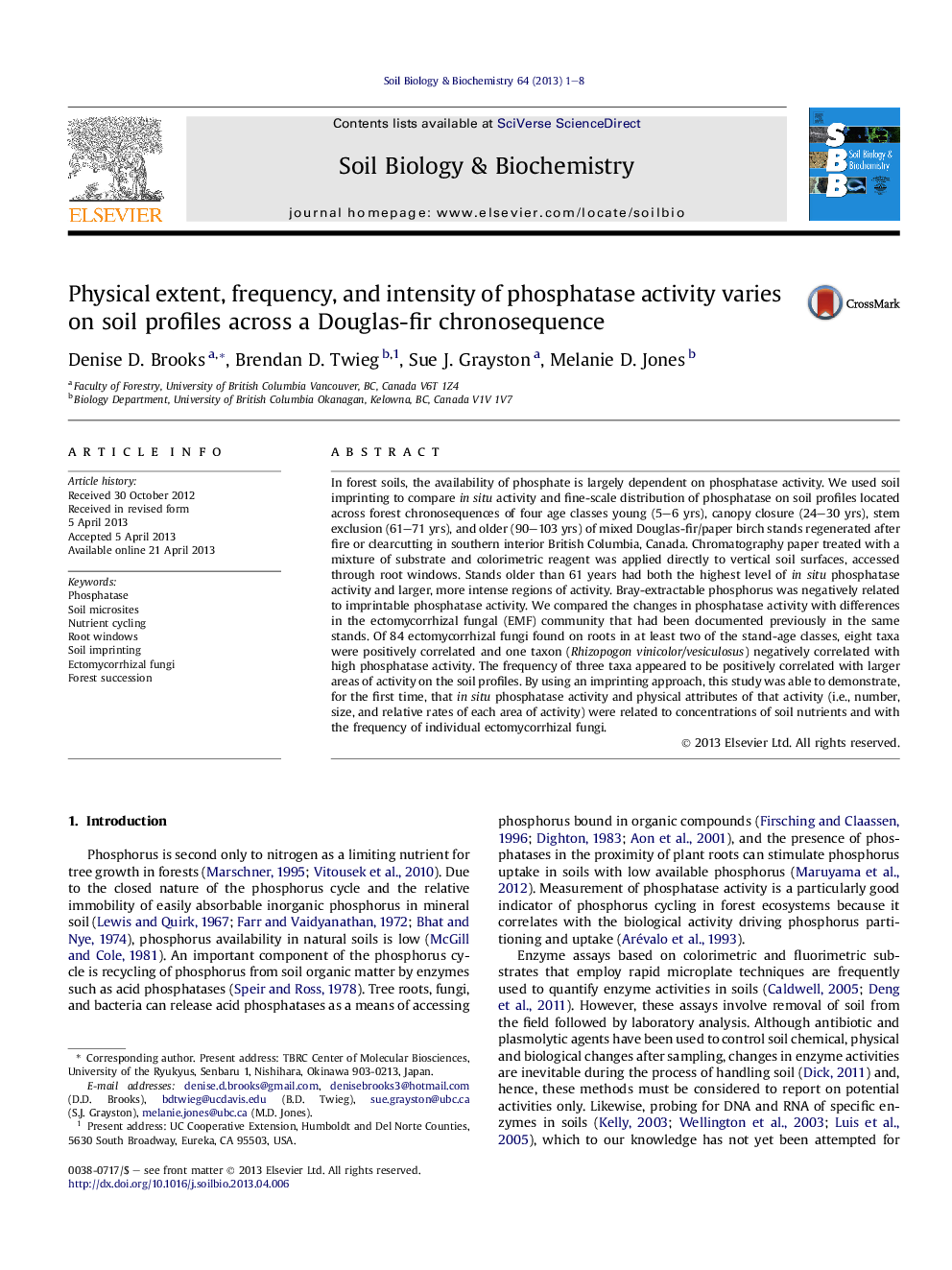| Article ID | Journal | Published Year | Pages | File Type |
|---|---|---|---|---|
| 2024756 | Soil Biology and Biochemistry | 2013 | 8 Pages |
•Phosphatase activity was imprinted along a birch – Douglas-fir chronosequence.•Older forests had larger, more frequent and more intense areas of activity.•Eight ectomycorrhizal fungal species were related with higher phosphatase.•Three ectomycorrhizal fungal taxa were related to larger areas of activity.•Soil chemistry related to amount, biological variables to area of activity.
In forest soils, the availability of phosphate is largely dependent on phosphatase activity. We used soil imprinting to compare in situ activity and fine-scale distribution of phosphatase on soil profiles located across forest chronosequences of four age classes young (5–6 yrs), canopy closure (24–30 yrs), stem exclusion (61–71 yrs), and older (90–103 yrs) of mixed Douglas-fir/paper birch stands regenerated after fire or clearcutting in southern interior British Columbia, Canada. Chromatography paper treated with a mixture of substrate and colorimetric reagent was applied directly to vertical soil surfaces, accessed through root windows. Stands older than 61 years had both the highest level of in situ phosphatase activity and larger, more intense regions of activity. Bray-extractable phosphorus was negatively related to imprintable phosphatase activity. We compared the changes in phosphatase activity with differences in the ectomycorrhizal fungal (EMF) community that had been documented previously in the same stands. Of 84 ectomycorrhizal fungi found on roots in at least two of the stand-age classes, eight taxa were positively correlated and one taxon (Rhizopogon vinicolor/vesiculosus) negatively correlated with high phosphatase activity. The frequency of three taxa appeared to be positively correlated with larger areas of activity on the soil profiles. By using an imprinting approach, this study was able to demonstrate, for the first time, that in situ phosphatase activity and physical attributes of that activity (i.e., number, size, and relative rates of each area of activity) were related to concentrations of soil nutrients and with the frequency of individual ectomycorrhizal fungi.
